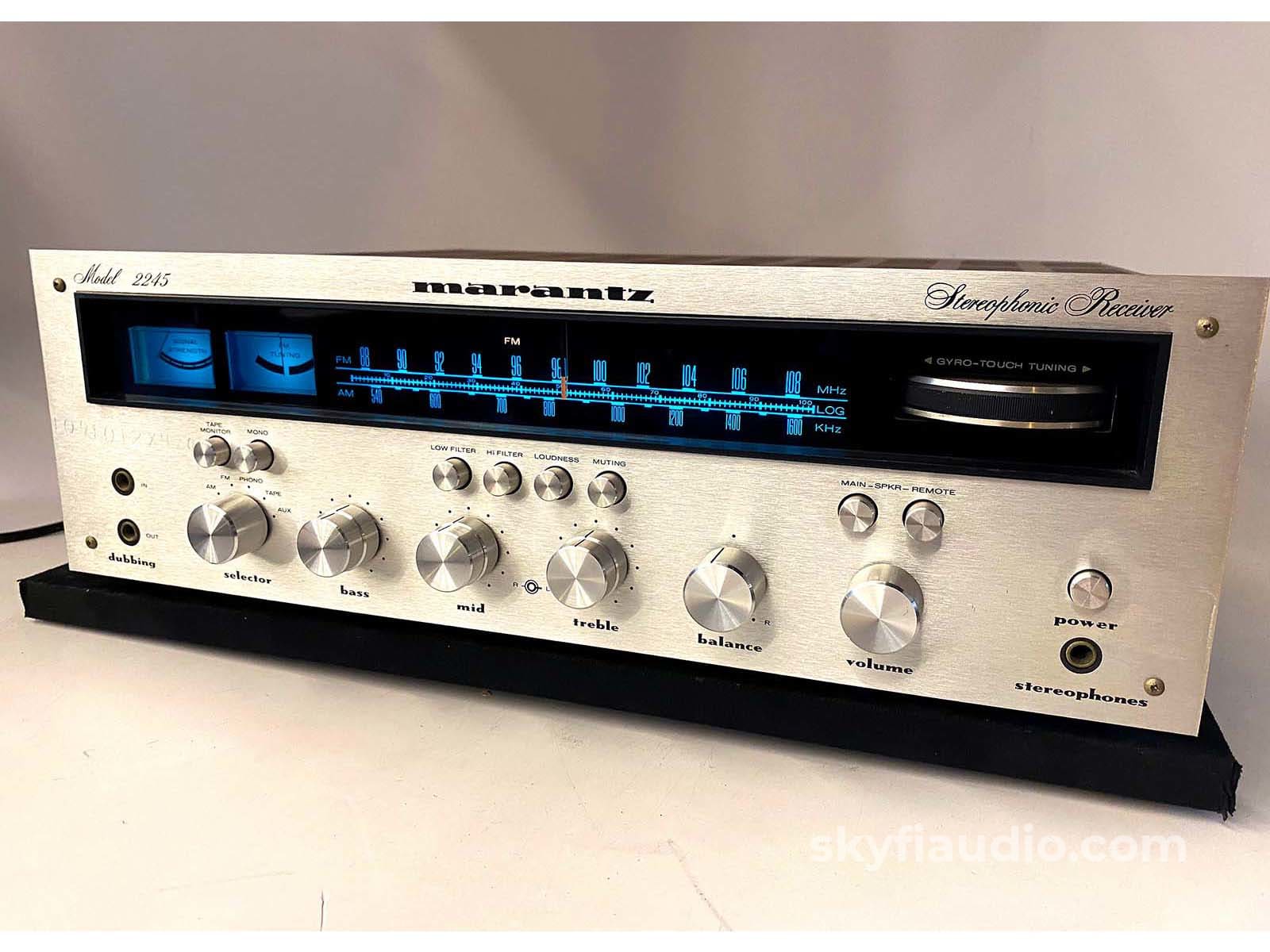
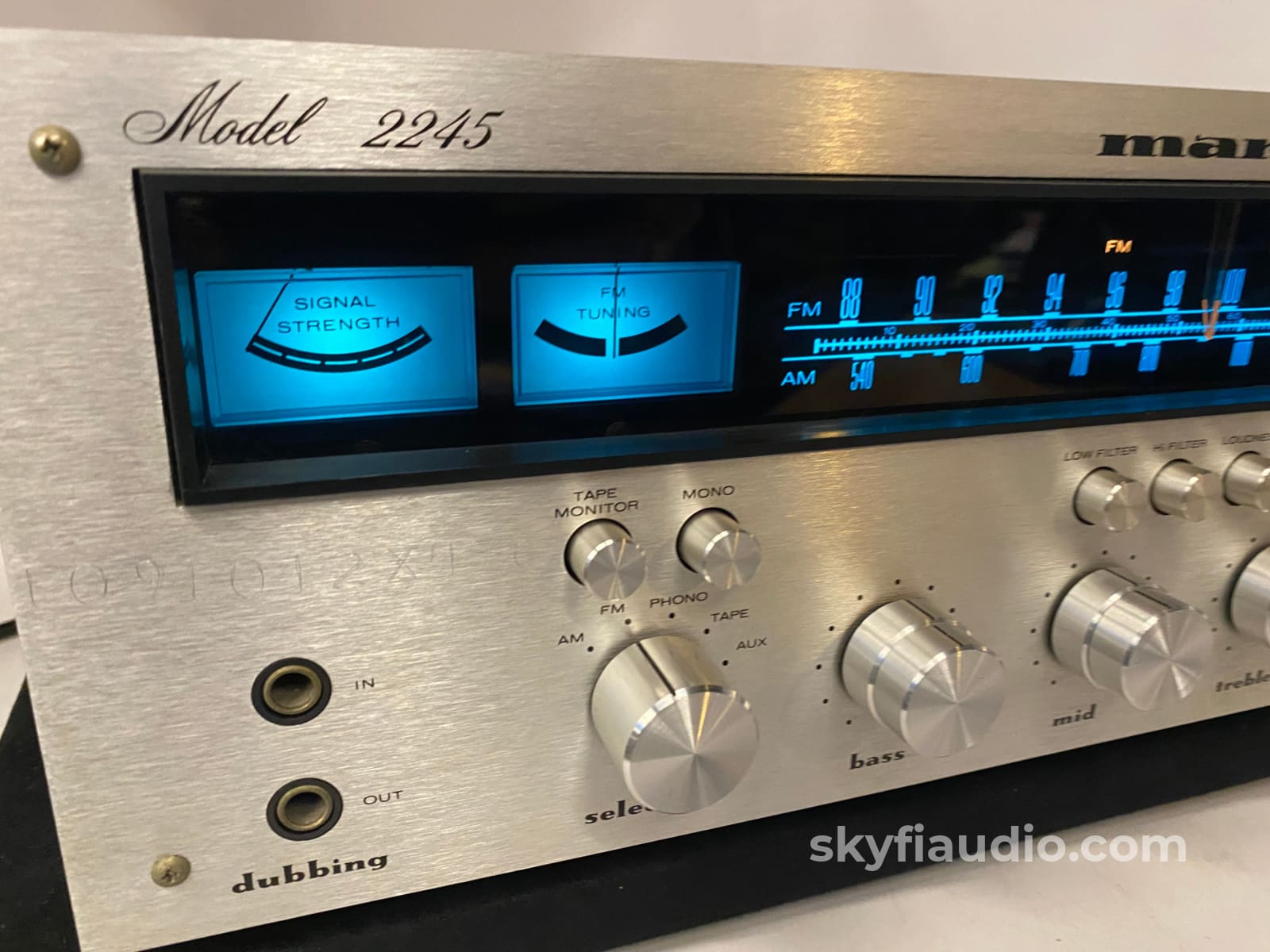
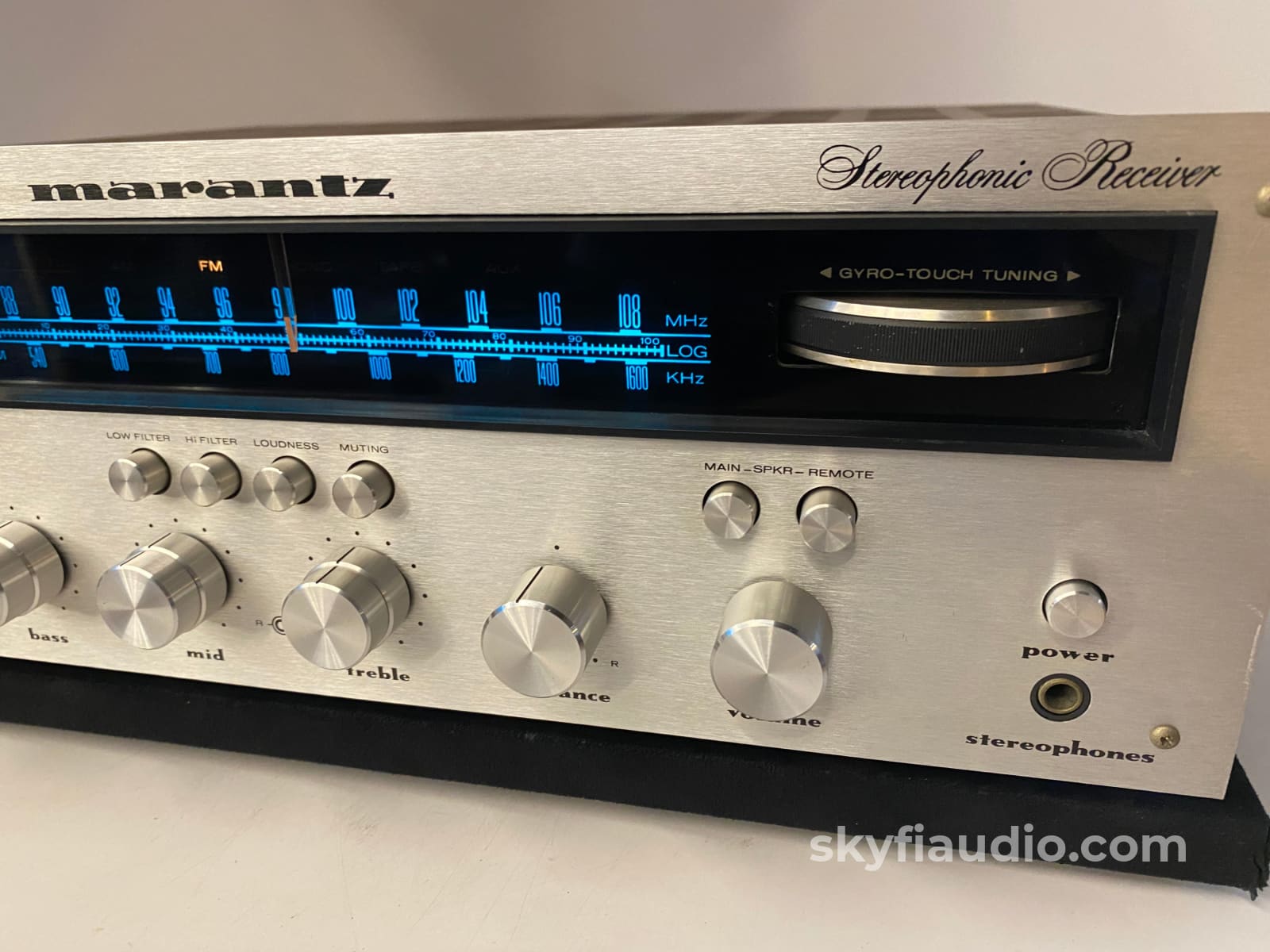
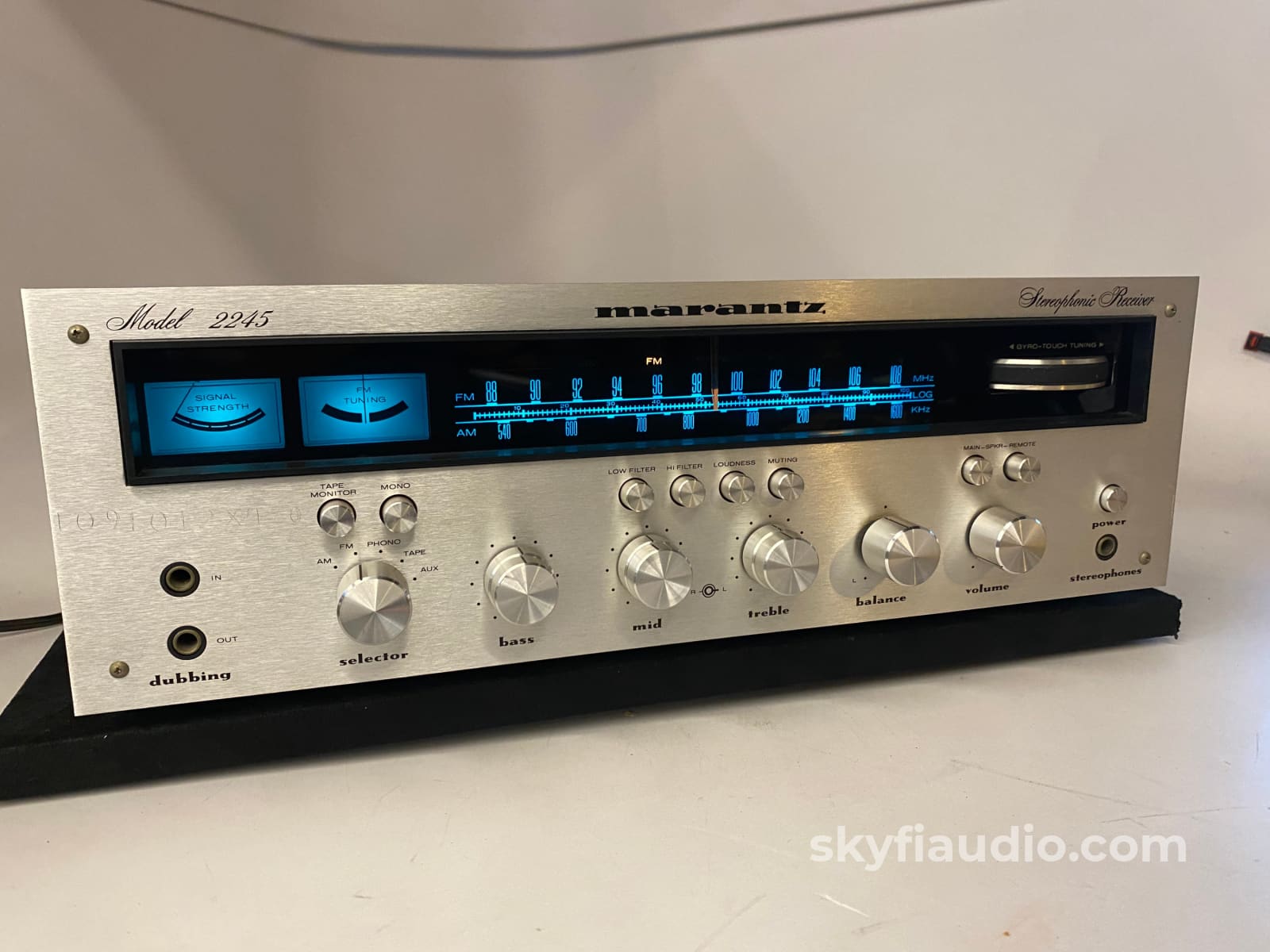
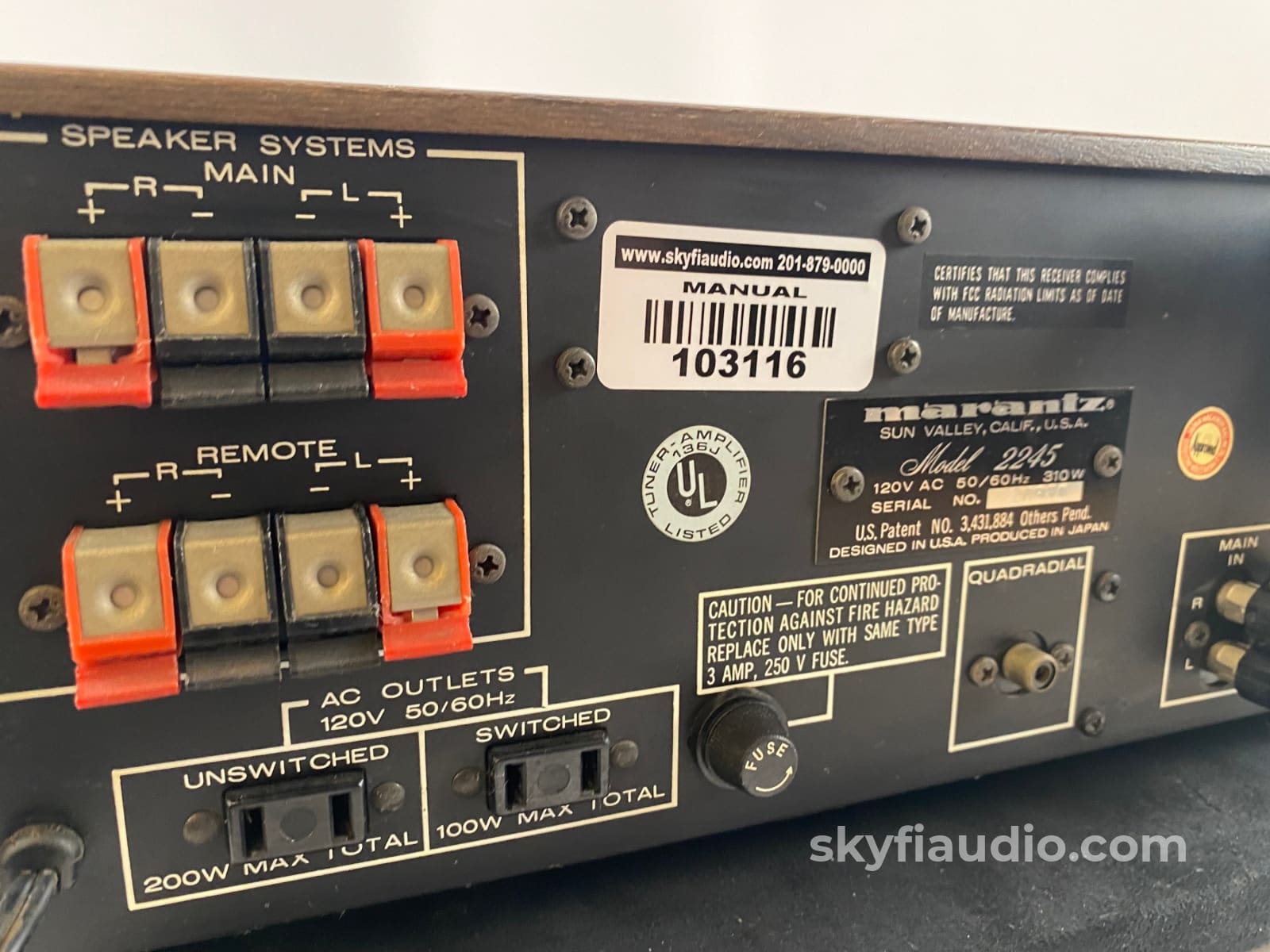
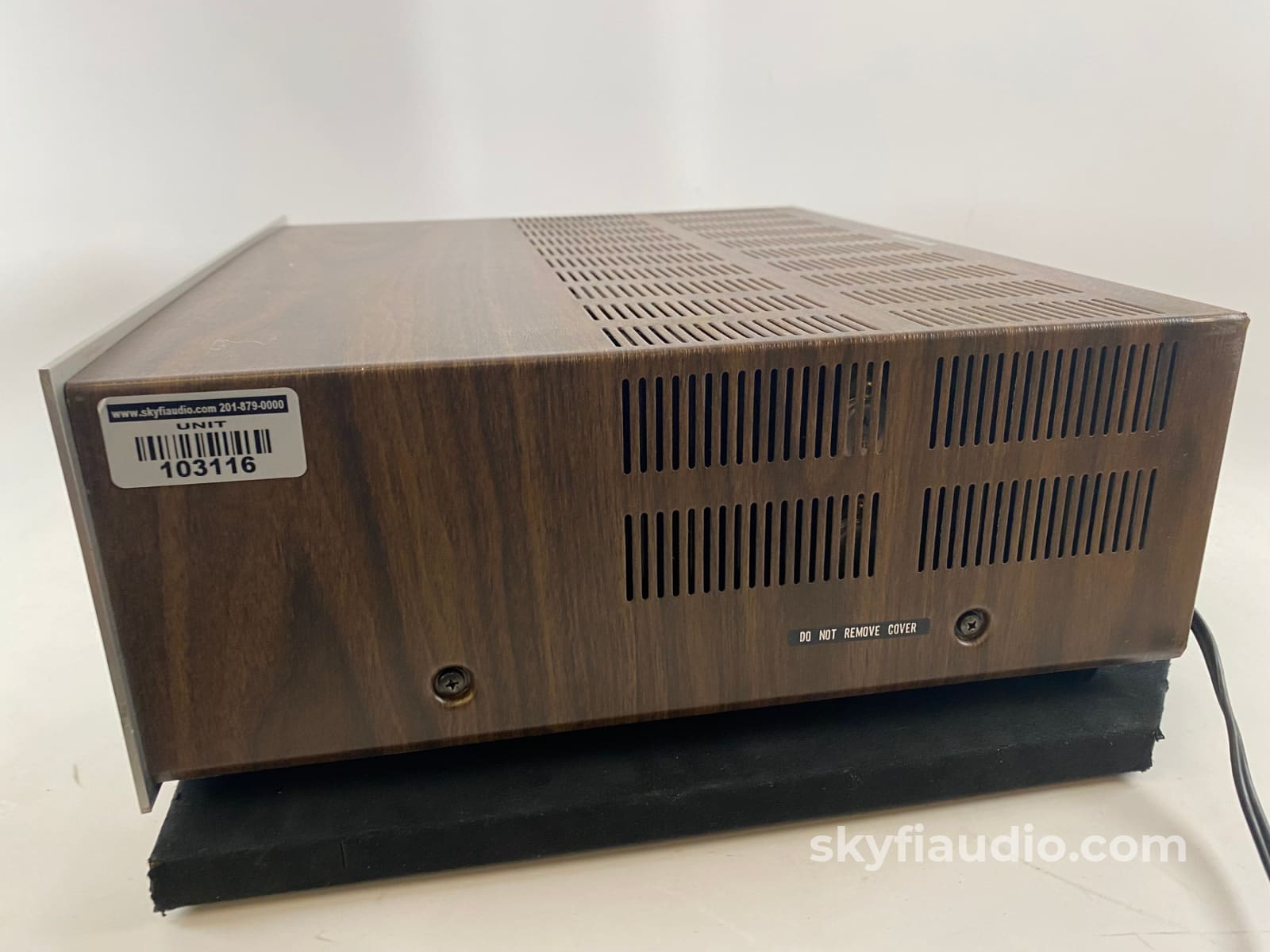
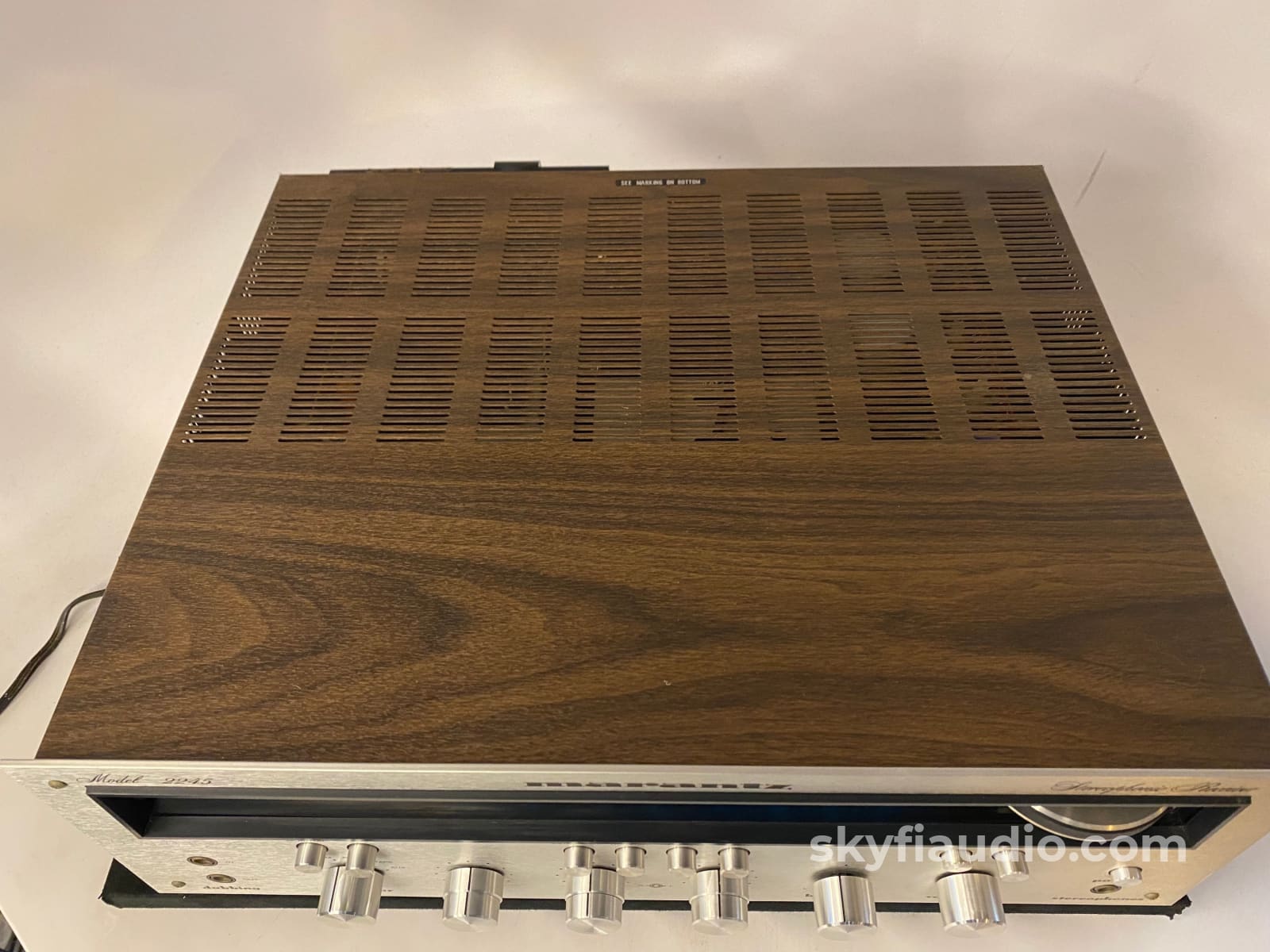
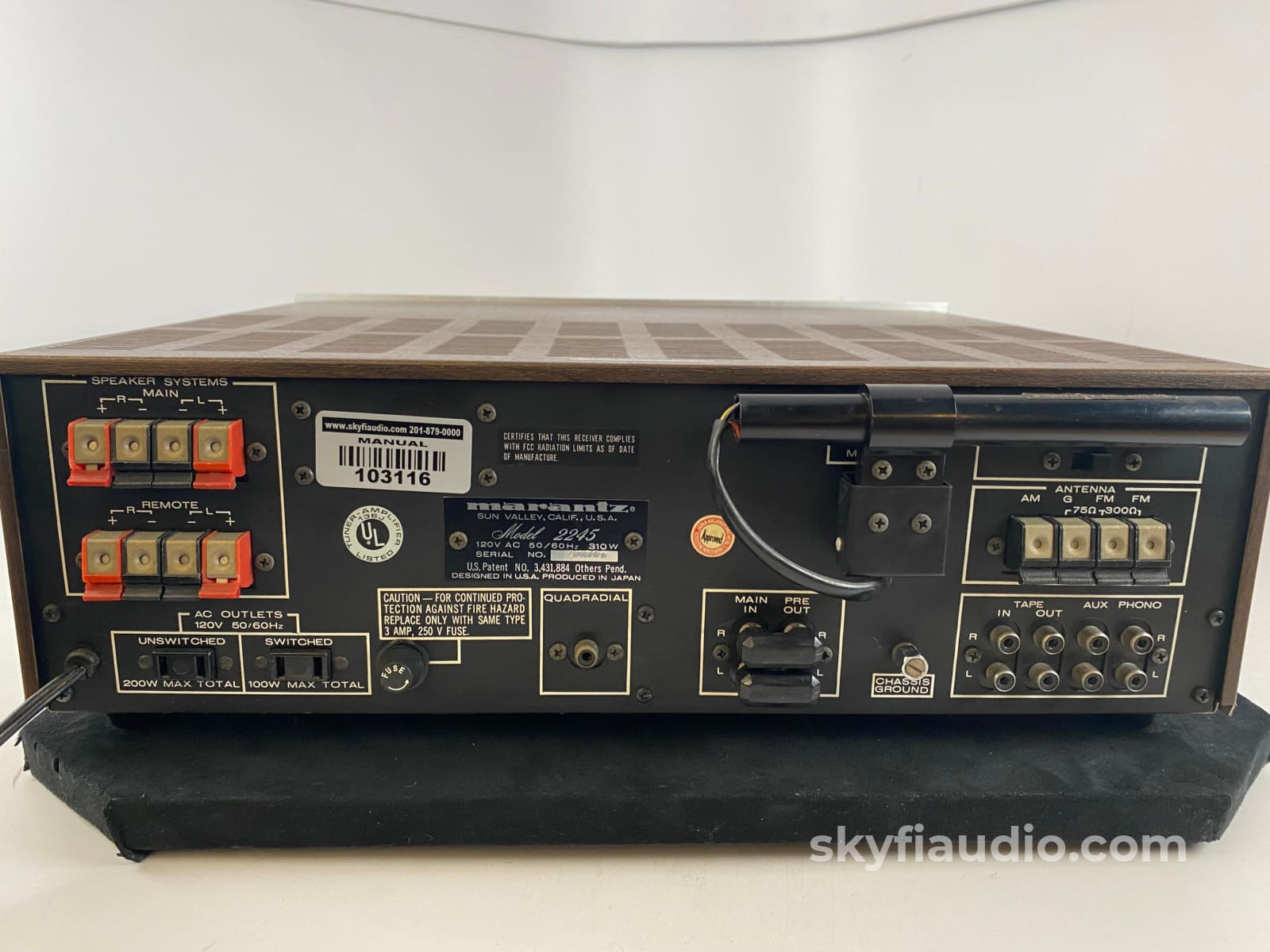
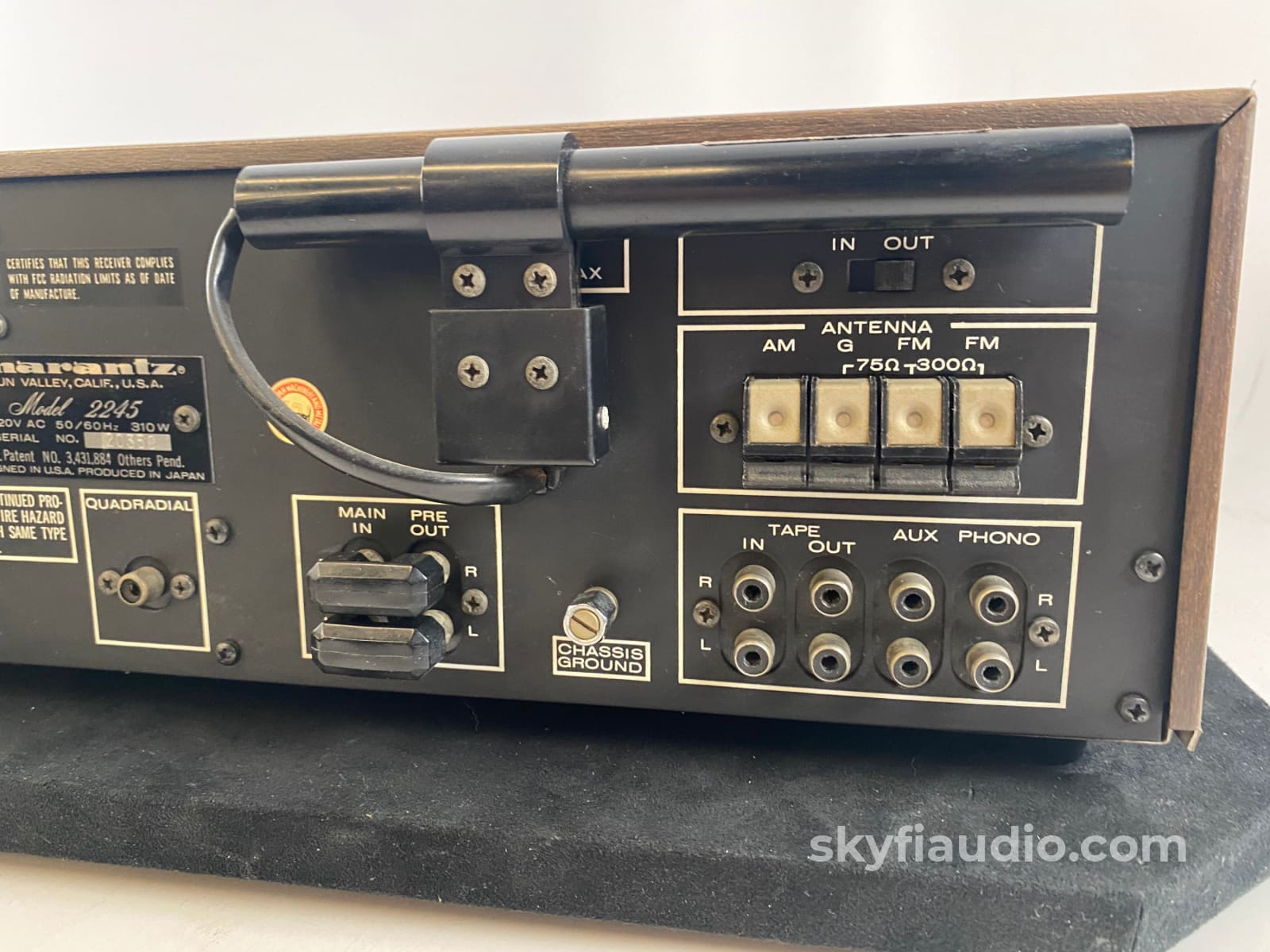
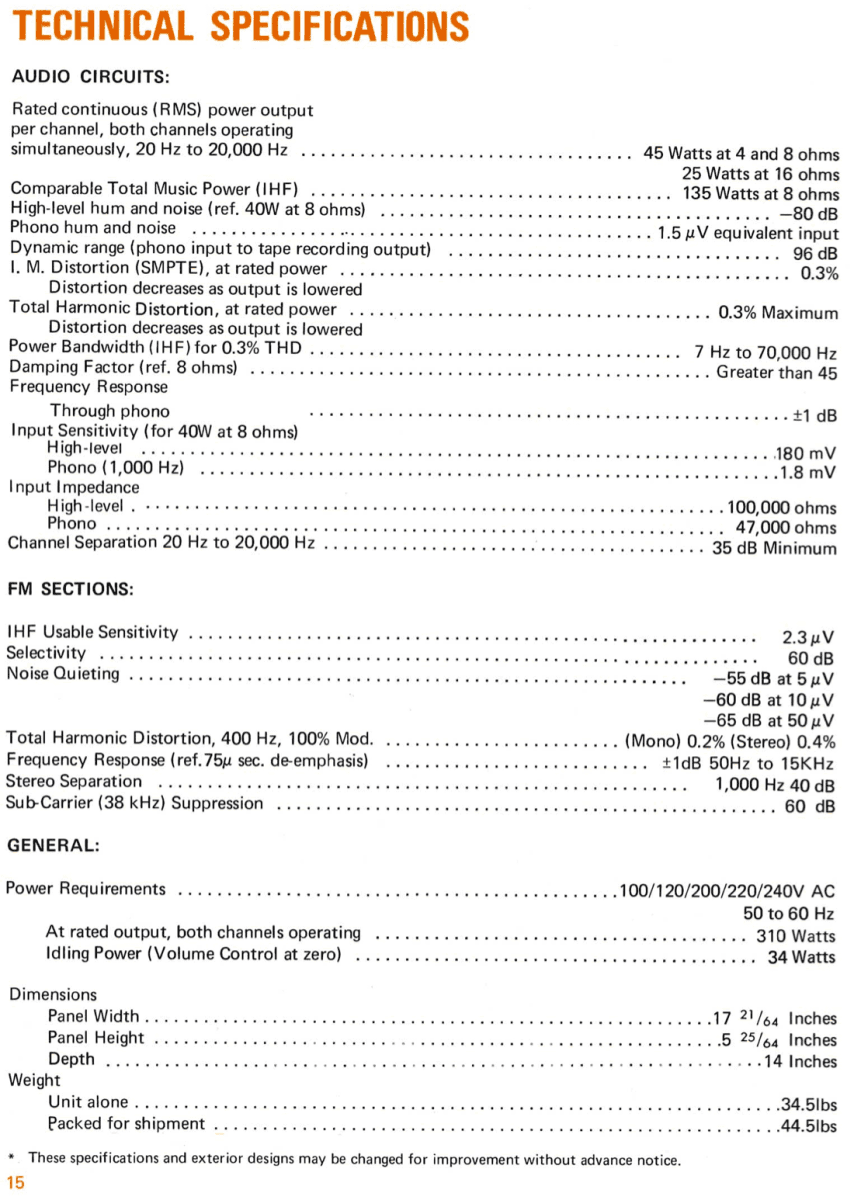
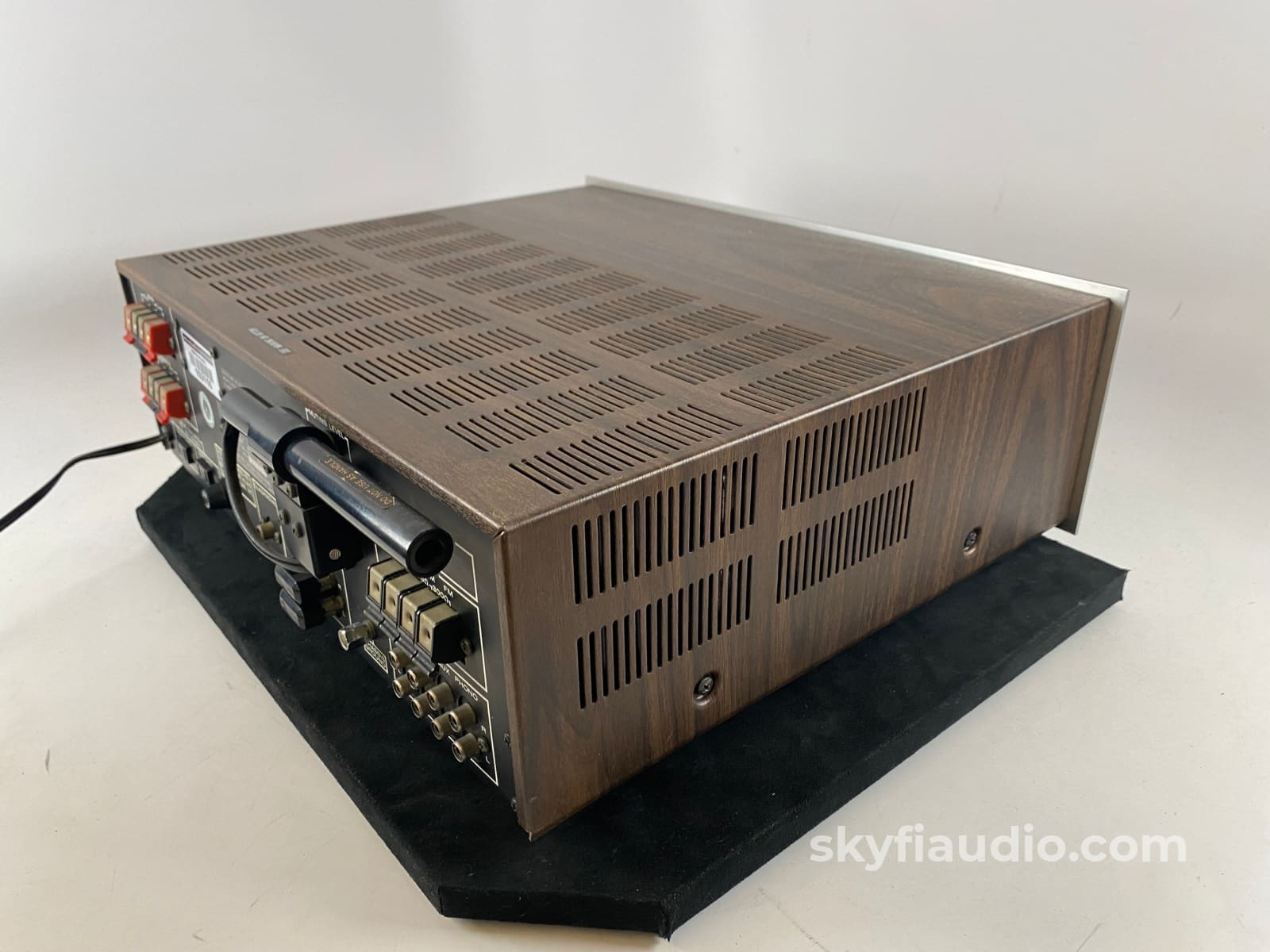
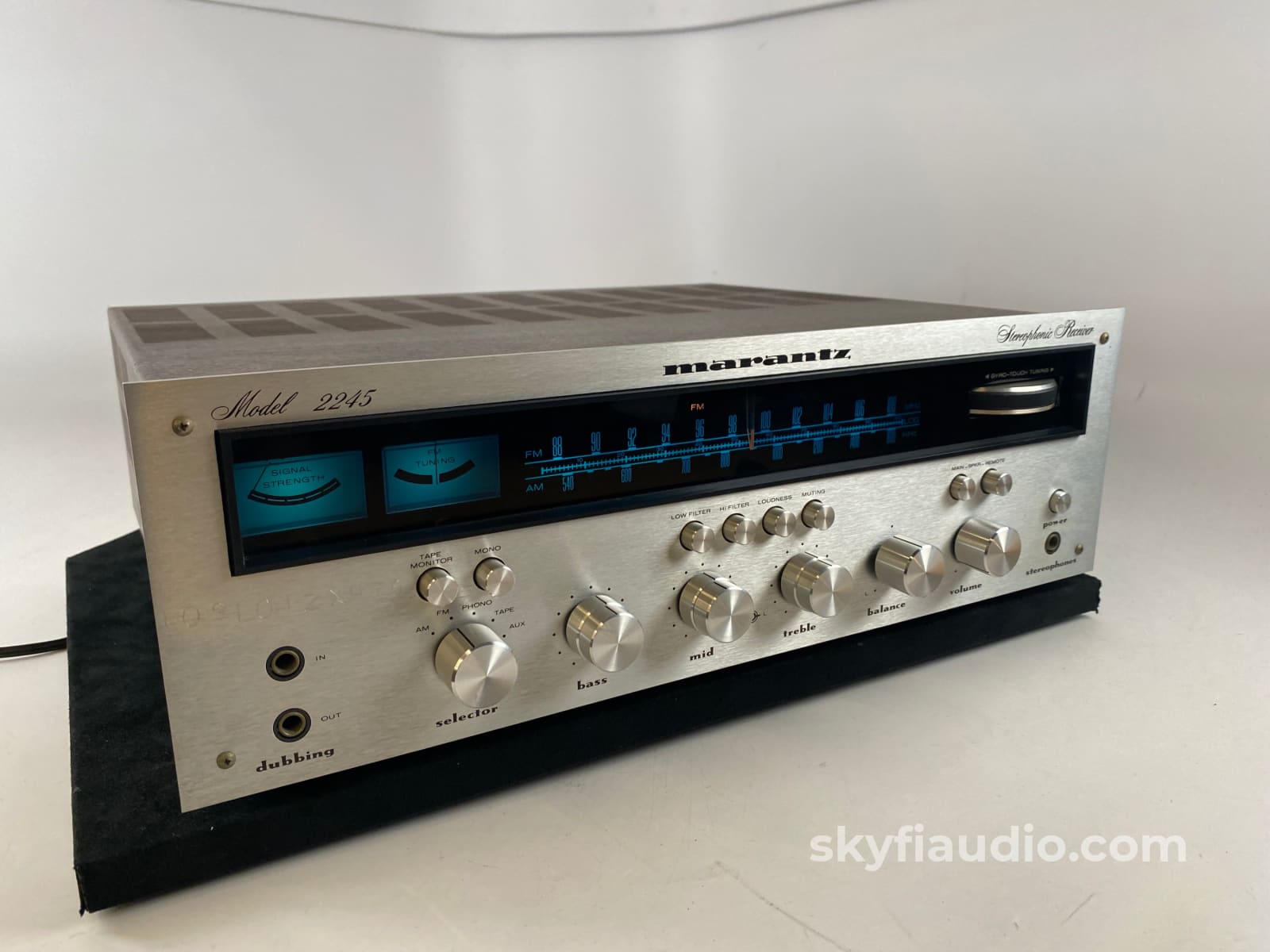
Marantz 2245 Stereophonic Receiver, Vintage Beauty, Light Service - Survivor
Free Shipping on Most Electronics - Excludes Speakers and Items Requiring Freight - Contiguous U.S. Only
Pickup currently unavailable at SkyFi 479

Marantz 2245 Stereophonic Receiver, Vintage Beauty, Light Service - Survivor
SkyFi 479
479 South Broad Street
Glen Rock NJ 07452
United States
This is a gorgeous vintage 2245 receiver where all of the original components are fully functioning aside from lamps.
This is what we call a survivor.
This example just received a light service here in our shop and is working and sounding fantastic. There's something about these vintage receivers and the way they sound vs other modern gear or separates of any era. Very warm and musical.
The only issue preventing this from receiving a 8 rating on our physical condition rating scale is due to a lightly etched number on the front left of the silver faceplate.
I've been testing this for some time at my desk since it looks so neat even when its doing nothing, and you have to look at certain angle for it to really show. Hasn't bothered me and I'm quite critical about this kind of thing.
SkyFi Service Notes:
• All burnt out lamps were replaced.
• Vellum carefully replaced (ages over time and diminishes the front panel classic "look").
• DC Offset and Bias adjusted.
• AM/FM both tested for proper dial tracking.
• All controls cleaned and lubricated with CAIG products.
• Faceplate & knobs cleaned and polished.
Click below to add our recommended matching cables from Kimber Kable, all brand new as SkyFi is an official Kimber dealer.
Kimber Kable - RCA Interconnects
Kimber Kable - Phono Interconnects
The SkyFi Testing Process for Solid State Amplifiers:
We start with a visual inspection of all internal components to make sure that there are no signs of heat stress or damage. Capacitors are checked for telltale signs of predictive failure including bulging, shrunken wrappers, or physical leakage. We also inspect the PCBs for discoloration from resistors or transistors that may have been running hot. On vintage units we often spot check select capacitors for value and ESR.
If the amplifier passes visual inspection, we move on to a controlled power on sequence using a Sencore safety analyzer to monitor current draw in real time. Once the amplifier is determined to be safe to operate, we connect it to full AC mains for function and power testing. We connect the speaker outputs of the amplifier to a Sencore PA81 Power Analyzer which acts as a dummy load, DC offset monitor, and oscilloscope interface. We start with a low level 1KHz test signal at the amplifier’s input and slowly increase its amplitude while monitoring the output on an oscilloscope for signs of noise, clipping, distortion, or improper channel balance. We continue increasing the signal level until the amplifier reaches clipping. At this point we take an output power measurement and compare it to the spec sheet of the amplifier to verify proper performance. If the device under test has both balanced and single ended inputs they are both tested at this time. We finish off the bench evaluation with a 1KHz square wave check and a 20Hz to 20KHz sine sweep to assess the amplifier’s frequency response characteristics. This battery of tests will usually reveal if the amplifier has any issues that need further attention.
Before the device leaves the bench, we perform a listening test with actual music using a variety of preferred test tracks. Our benches are outfitted with familiar monitor speakers which help us identify inconsistencies that will not always show up on our test gear. The main things that we are listening for are hum or noise with no signal present, proper center image, clicks, pops, or any other obvious undesirable audio characteristics.
If the unit passes all of these tests it is moved to our long term testing rig where we simulate real word operating conditions for 6-8 hours. This allows us to monitor the unit for signs of thermal runaway or intermittent issues that only crop up when the unit has fully come up to temperature.
The SkyFi Testing Process for Tuners:
We start with a visual inspection of all internal components to make sure that there are no signs of heat stress or damage. Capacitors are checked for telltale signs of predictive failure including bulging, shrunken wrappers, or physical leakage. We also inspect the PCBs for discoloration from resistors or transistors that may have been running hot. On vintage units we often spot check select capacitors for value and ESR. Vintage analog tuners also have moving parts related to the tuning gang and dial string. These parts are inspected for smooth operation.
If the tuner features tubes, we move on to a full testing of each and every tubes. We use an Amplitrex AT-1000 Tube Tester which is capable of testing both emission and Gm with a high degree of accuracy. We document the results of each tube and replace any weak or suspect tubes before proceeding.
If the unit passes visual inspection it is bench tested for a handful of key performance parameters using a Sencore SG80 AM/FM Stereo Analyzer. The SG80 allows us to “simulate” an ideal radio station using precision test signals instead of music. This device, in conjunction with an oscilloscope allows us to properly evaluate the following parameters:
1. AM Reception (Where Applicable)
2. FM Mono Reception & Tuning Meter Function
3. FM MPX Reception (Stereo)
4. Dial Tracking - How accurately the tuner dial or display indicates the actual frequency of the broadcast being received.
5. Stereo Separation - A properly working stereo tuner will have minimal crosstalk between the left and right channel.
6. Sensitivity & Signal Strength Meter Function - By lowering the output of the SG80 we can simulate weak stations and determine how well the tuner will be able to pull in weak distant stations. This adjustment also helps us verify signal strength meter function.
If the tuner has acceptable performance related to the parameters above we connect the unit for listening tests with a simple dipole antenna. We listen for audio reproduction quality of local stations and evaluate how many stations the tuner can receive while we sweep through the dial. We are looking to verify that the tuner can decode stereo on strong local broadcasts and pick up a wide variety of local stations at the bottom, middle, and top of the frequency band. At this point we also test convenience features such as muting, filters, built in oscilloscope function, etc.
We finish up with an extended listening test on our long term test rig. We tune in a strong local station and monitor for drift over a 2-3 hour period.
Link to Marantz Manual with full specs:
Marantz 2245 Stereophonic Receiver - Owner's Manual
|
Item |
Included |
|
Original Box |
Not Included |
|
Manual |
Online Only |
|
Remote |
Not Applicable |
|
Cables |
Yes - Power Only |
|
Physical Condition |
7 / 10 |
|
Working Condition |
10 / 10 |
TECHNICAL SPECIFICATIONS
AUDIO CIRCUITS:
Rated continuous (RMS) power output per channel, both channels operating simultaneously, 20 Hz to 20,000 Hz:
45 Watts at 4 and 8 ohms
25 Watts at 16 ohms
Comparable Total Music Power (IHF):
135 Watts at 8 ohms
High-level hum and noise (ref. 40 W at 8 ohms):
-80 dB
Phono hum and noise:
1.5 uV equivalent input
Dynamic range (phono input to tape recording output):
96 dB
I. M. Distortion (SMPTE), at rated power:
0.3% - Distortion decreases as output is lowered
Total Harmonic Distortion, at rated power:
0.3% Maximum - Distortion decreases as output is lowered
Power Bandwidth (IHF) for 0.3% THD:
7 Hz to 70,000 Hz
Damping Factor (ref. 8 ohms):
Greater than 45
Frequency Response:
+/- 1 dB Through phono
Input Sensitivity (for 40 W at 8 ohms):
High-level: 180 mV
Phono (1,000 Hz): 1.8 mV
Input Impedance:
High-level: 100,000 ohms
Phono: 47,000 ohms
FM SECTIONS
IHF Usable Sensitivity:
2.3 µV
Selectivity:
60 dB
Noise Quieting:
-55 dB at 5 µV
-60 dB at 10 µV
-65 dB at 50 µV
Total Harmonic Distortion, 400 Hz, 100% Mod.:
(Mono) 0.2% (Stereo) 0.4%
Frequency Response (ref. 75u sec. de-emphasis)
+/- 1dB 50 Hz to 15 KHz
Stereo Separation
1,000 Hz 40 dB
Sub-Carrier (38 kHz) Suppression
60 dB
GENERAL
Power Requirements:
100/120/200/220/240V AC
50 to 60 Hz
At rated output, both channels operating:
310 Watts
Idling Power (Volume Control at zero):
34 Watts
Dimensions:
Panel Width:
17-21/64"
Panel Height:
5-25/64"
Depth:
14"
Weight:
Unit Alone:
34.5 lbs.
Packed for Shipment (Original Carton):
44.5 lbs.
Choose options
